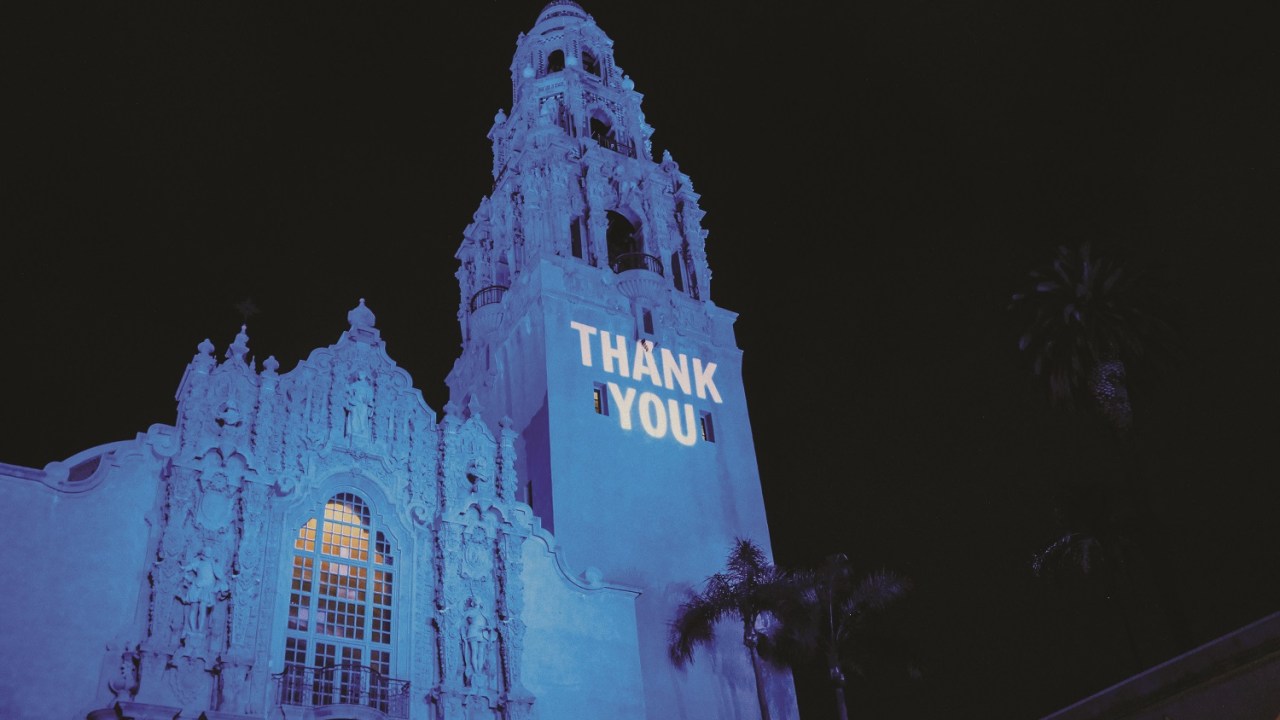
This article originally appeared in the September/October 2020 issue of Museum magazine, a benefit of AAM membership.
In response to the COVID-19 pandemic, museums are broadening their missions to serve community needs.
Baking bread, teaching cross-stitch online, providing feline pen pals. These activities don’t immediately come to mind when we think of museums’ community engagement efforts, but they are among the ways in which museums have continued to serve their communities during the COVID-19 pandemic.
During this time, museum leaders have repurposed their assets and resources to help their communities by, among other things, contributing masks and gloves to PPE drives, making financial and food donations to local organizations, and instituting a range of innovative online programs. This work not only addresses immediate needs but also may transform how museums serve their communities in the future.
Connecting Can Be Simple
When the Philbrook Museum of Art in Tulsa, Oklahoma, closed, President and Director Scott Stulen and his staff launched a flurry of new programming.
“We already had a very robust social media presence,” says Stulen, and “I said, ‘We’re not going to put the mission on pause. We’re going to go from ideas to execution in hours instead of months.’” Of his 120 staff members, he furloughed all of the part-timers and 17 full-time employees, until he received a loan that allowed him to bring back all of the full-time staff in June.
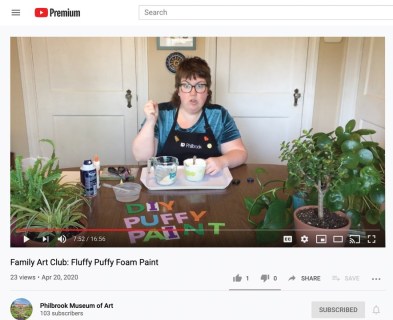
“I thought we could take some risk and experiment, and it’s been a great kind of lab. We’ve done almost 200 new programs geared to different audiences for our weekly Museum From Home platform and had more than 250,000 views.” Well-received Museum From Home programs have included hands-on art projects through the Family Art Club, behind-the-scenes tours, and gardening lessons from the horticulture team.
The museum also tripled the size of its vegetable garden in order to supplement Tulsa food banks and created an online marketplace where artists could sell their works and receive 100 percent of the proceeds. The museum committed to giving 10 percent of membership fees they receive during the shutdown and beyond to the United Way COVID-19 relief fund and contributed almost $5,000 in the first two months.
One particularly popular engagement offering was the opportunity to exchange letters with the museum’s two garden cats, Cleo and Perilla, with responses written by staff volunteers. The cats received thousands of letters from all over the world—including an especially moving one from an incarcerated man who said he was lonely and needed to talk.
“It does go to our core mission—connecting people to art and gardens,” Stulen says. “Sometimes keeping people connected is really simple.”
He anticipates that the approaches he and his team are taking now will alter their actions in the future. “We’re allowing things to happen and giving it some space. I’m hoping we can get a little looser, not be quite as buttoned-up, and take more risks—and that this will allow us to operate with less resources and still be successful.”
The Work Continues
Micah Parzen, CEO of the Museum of Us, responded to the pandemic by sending out a “Proposal to Serve Community Need” to 15,000 stakeholders, including members, funders, and local politicians, seeking suggestions on how the museum could assist the community.
“In the 1940s the museum was used as a hospital by the Navy, so we said, ‘We are standing at the ready and eager to help,’” Parzen says. The museum sits in Balboa Park and has 60,000 square feet of space that Parzen was eager to repurpose. “We got an amazing response, with many unique and innovative suggestions, including a domestic violence shelter and a tiny homes community for veterans.”
After reviewing the ideas, Parzen took steps to become a food distribution site for the food bank Feeding San Diego. “We had pre-existing, high-level contacts among food distribution and homeless support nonprofits, and logistically it made sense to try to go in that direction. We were ready to act on that partnership, but the city wasn’t comfortable
reopening the park to anyone other than essential staff, which precluded us from using our steps and the California Plaza in front of the museum in that way.”
They decided to use the museum’s iconic California Tower, which can be seen for miles, to display a message of gratitude on all four sides. “Every night at dusk we project “THANK YOU” in blue lights, in keeping with the worldwide #LightitBlue movement to honor frontline workers everywhere.” The effort garnered extensive media coverage and positive response.
With Balboa Park reopening for outdoor museums, restaurants, and retail, Parzen has again reached out to Feeding San Diego to see if there’s still a need the museum can serve. If so, he will ask the city for permission to serve as a food distribution site until the museum can reopen.
In the meantime, the critical work of the museum continues. Fifty-two staff members have been furloughed, and the remaining 11 are focusing on the museum’s ongoing decolonizing, consulting, and repatriation efforts.
Remember Your Mission
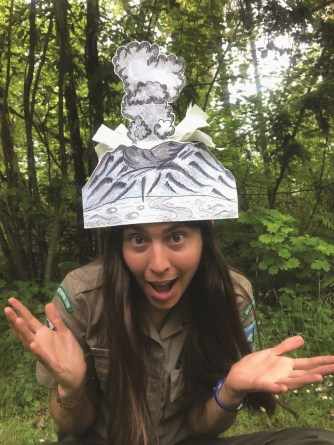
Washington State Historical Society staff purposely hit pause for several weeks after shutting down to determine how they could help their Tacoma community, says Director Jennifer Kilmer.
“It was challenging for us because we realized we had not been living in a digital sphere,” she says. “We didn’t have online exhibits, so we had to evaluate what we could do.” They decided to provide educational resources to help local schools’ digital learning efforts.
“We had already created an app that museum visitors could use to dive deeper into our exhibits,” Kilmer says. “So our staff adapted it by adding History Lessons to Go, which can be done from home, and downloadable activity sheets that link to the content in the app’s gallery tours. We also retooled some of our traditional classroom curriculum and created units that parents can download to support their children’s learning at home.”
For their heritage organization colleagues across the state, they created an extensive list of COVID-19 resources for museums on their website as well as a Heritage Outreach Facebook group to connect and share common concerns.
They also launched “Collecting the COVID-19 Experience,” which asks community members to document the pandemic by submitting anything that helps tell the story of living through it. The first 250 items included videos, photos, quarantine journals, and the promise of a quilt made by quilters from across the state. The items will eventually become an exhibit that aligns with the museum’s mission of “partnering with our communities to explore how history connects us all.”
And by presenting traditional live programming online, the society significantly broadened its reach. The Mount St. Helens 40th Anniversary Story Hour, a program with Washington State Parks that featured five storytellers sharing their memories of the 1980 volcanic eruption, had more than 10,000 views, far beyond the reach of an in-person program.
“We can now reach out all over the state—we need to keep including this virtual format,” Kilmer says. “Going forward, community engagement looks exciting and daunting. This has been an opportunity for us to become much better known, but we still have to ask, ‘What’s our strength?’ The programs we’ve done that have stayed closest to
our mission have been the best attended. Something that guides us, even in non-COVID time, is asking not just can we do it, but does it play to our strengths?”
Meet People Where They Are
When the pandemic struck, Dumbarton House Executive Director Karen Daly and her 11 staff members immediately focused on the critical public health needs of its Washington, DC, area. With four other local house museums and a museum collections contractor, they launched a PPE drive and were able to contribute 2,500 pairs of nitrile gloves plus homemade masks and Lysol to Unity Health Care, a network of community health centers in DC.
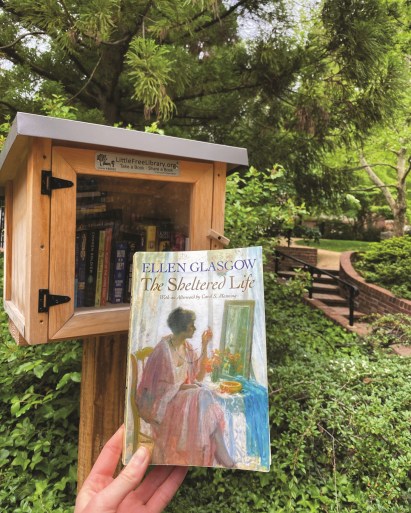
They also developed a biweekly e-newsletter to share news and resources with the members of the National Society of the Colonial Dames of America (NSCDA) and affiliated museums and historic sites across the country. And they created new virtual programming, which included the “Cross Stitch in Quarantine” workshop and the regular Great
Dumbarton Bake Off, an Instagram story where anyone can make and share recipes. Between 100 and 200 people watch the latest baking story every Wednesday, 10 times the interaction of Dumbarton House’s other Instagram stories. In addition, staff created digital puzzles made from works in the collection to share on the NSCDA website (nscda.org/nscda-digital-puzzles).
Despite those successes, Daly didn’t want to limit Dumbarton House to online outreach. “People do want virtual opportunities, but there is some kind of exhaustion with screen time. It’s important to look for things that are therapeutic and rejuvenating, something people can do as a family. We are an urban green space in a residential community, so we decided to leave our grounds and gardens, which are usually inaccessible, open to the neighbors.”
People use the grounds to jog and walk, have picnics, and work using the free Wi-Fi. “We’ve had very positive social media posts, and multiple families have told me how much they appreciate the space, especially since the playgrounds closed,” Daly says. “This reinforced that it’s important to meet people where they are, and we’re finding that there’s a real, genuine need for that outdoor space. It’s something our community really values, so we will be keeping the gardens open once the museum has reopened.”
Feeding Body, Mind, and Soul
Franklin Vagnone, president and CEO of Old Salem Museums & Gardens/Museum of Early Southern Decorative Arts in Winston-Salem, North Carolina, also owns an international consulting firm. Through his communications with colleagues around the world, he understood what was coming and got a head start on implementing new online programming.
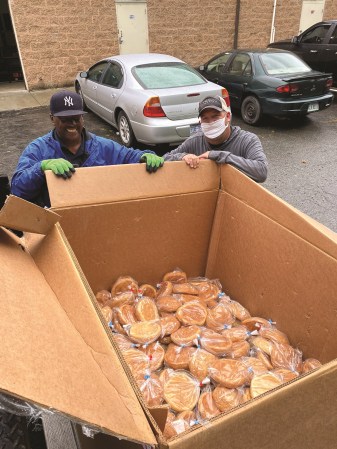
The museum launched the Old Salem Exploratorium, a series of five- to 10-minute educational videos that have included craft workshops, a seed-saving lab, and behind-the-scenes looks at the collection, and the popular History Nerd Alerts, social media posts that highlight collection items related to illness, health, and medicine.
The museum has also focused on food-related outreach efforts. “The community we serve is in transition,” Vagnone says. “Winston-Salem has gone from being a fairly affluent community to one that’s in need of a lot of help; there’s a lot of food insecurity. So when the public bakeries were closing, our head baker [at the living history site] said, ‘Why don’t I just go in by myself and bake?’”
The museum has donated more than 2,000 loaves of bread to Second Harvest Food Bank. It also turned some of its flower gardens into victory gardens, and the first biweekly harvest resulted in 140 pounds of vegetables going to the food bank.
The garden also produced some unexpected sustenance. “A woman from New York saw one of our Twitter videos where my husband and I are working in the garden, and she sent a message thanking me because the peaceful sound of birds in the background was drowning out the sound of the New York ambulances,” Vagnone says. “That peaceful quality is in itself part of feeding the soul.”
He expects that many of these outreach efforts will become permanent. “Our ability to serve the larger community is too important not to continue. We’ve undergone a drastic shift in the way we operate, and there’s been an amazing transformation of how a living history site can help the community. The community has embraced us—they see us now as a real, tangible community asset, whereas before they might have seen us as a nostalgic and pretty place to walk.”
He also hopes this type of outreach results in more systemic changes among museums and the entire nonprofit community. “This is the kind of DNA we should be swimming in. We should invert the traditional model of focusing only on ourselves, and use our collections, our histories, and our stories to help our communities.”
Mary Ellen Collins is a freelance writer based in St. Petersburg, Florida.







